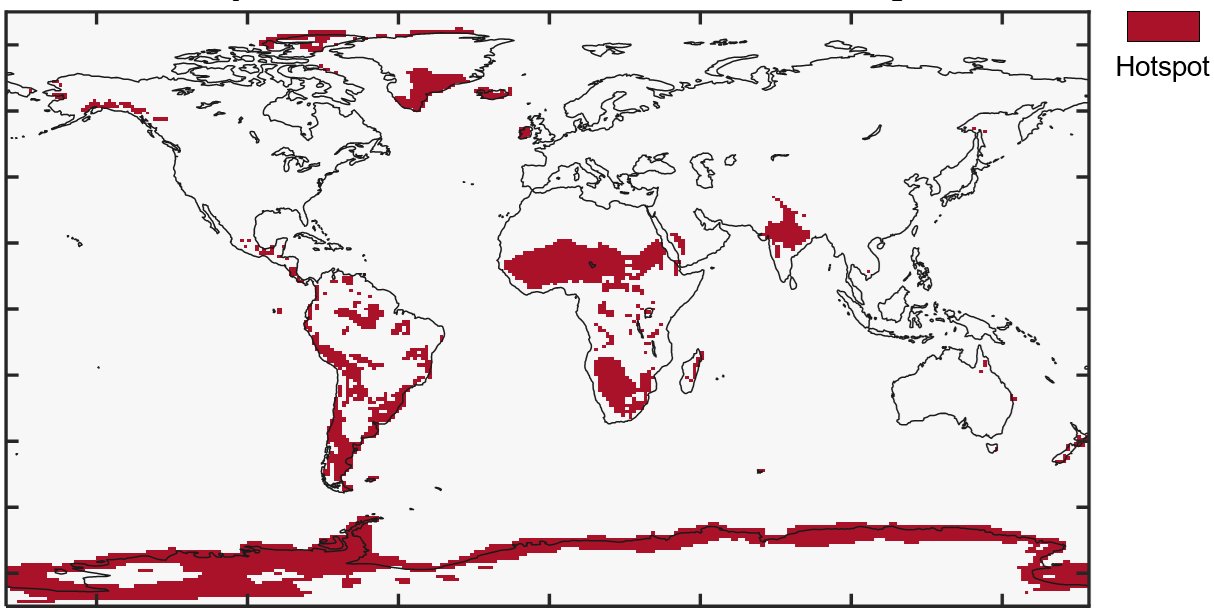Irreversible climate changes expected even with decreased greenhouse gas: study
Researchers develop world’s first climate recovery map
By Kan Hyeong-wooPublished : Sept. 2, 2022 - 15:49

A group of researchers at Yonsei University have found that even if the concentration level of greenhouse gases in the atmosphere is reduced to that of the pre-industrial era, it will be difficult to restore the climate’s condition to its original state.
According to Yonsei University on Friday, an in-house research team led by atmospheric sciences professor An Soon-il developed the world’s first climate recovery map, which is designed to illustrate possible improvements in global surface temperatures and precipitation with reduced greenhouse gas emissions by region over a timespan of centuries.
The researchers used an Earth system model with the idealized scenario of removing carbon dioxide emissions to pre-industrial levels.
Despite the decreased amount of CO2 emissions, the study projected that 89 percent of global areas would experience irreversible changes in surface temperature, while 58 percent will experience irreversible changes in precipitation. The results showed that African and South American regions will inevitably face a climate crisis, whereas North American, European and East Asian areas’ climate could improve in the future.
“These findings show that reducing greenhouse gases in most parts of the world does not restore the climate to its original condition, and even if greenhouse gases are removed from the atmosphere, their impact will remain for the long term,” said Kim Soong-ki, the first author of the study.
“The difference between the climate improvability levels of developing countries and developed countries is significant, which indicates the potential damage to developing countries from greenhouse gas emissions is very large,” he added.
The researchers marked the areas that are forecast to have the lowest level of climate improvability as “hot spots.” Most of the hot spots fell on developing countries across the world.
An, the study’s corresponding author, stressed the need for stronger policies to reduce more greenhouse gas emissions.
“Achieving zero carbon dioxide emissions, the goal of the Paris Agreement, is not the complete solution to the climate problem,” An said.
The study was published in the journal Nature Climate Change with open access on Thursday.
According to Yonsei University on Friday, an in-house research team led by atmospheric sciences professor An Soon-il developed the world’s first climate recovery map, which is designed to illustrate possible improvements in global surface temperatures and precipitation with reduced greenhouse gas emissions by region over a timespan of centuries.
The researchers used an Earth system model with the idealized scenario of removing carbon dioxide emissions to pre-industrial levels.
Despite the decreased amount of CO2 emissions, the study projected that 89 percent of global areas would experience irreversible changes in surface temperature, while 58 percent will experience irreversible changes in precipitation. The results showed that African and South American regions will inevitably face a climate crisis, whereas North American, European and East Asian areas’ climate could improve in the future.
“These findings show that reducing greenhouse gases in most parts of the world does not restore the climate to its original condition, and even if greenhouse gases are removed from the atmosphere, their impact will remain for the long term,” said Kim Soong-ki, the first author of the study.
“The difference between the climate improvability levels of developing countries and developed countries is significant, which indicates the potential damage to developing countries from greenhouse gas emissions is very large,” he added.
The researchers marked the areas that are forecast to have the lowest level of climate improvability as “hot spots.” Most of the hot spots fell on developing countries across the world.
An, the study’s corresponding author, stressed the need for stronger policies to reduce more greenhouse gas emissions.
“Achieving zero carbon dioxide emissions, the goal of the Paris Agreement, is not the complete solution to the climate problem,” An said.
The study was published in the journal Nature Climate Change with open access on Thursday.








![[KH Explains] Hyundai's full hybrid edge to pay off amid slow transition to pure EVs](http://res.heraldm.com/phpwas/restmb_idxmake.php?idx=644&simg=/content/image/2024/04/18/20240418050645_0.jpg&u=20240419100350)







![[From the Scene] Monks, Buddhists hail return of remains of Buddhas](http://res.heraldm.com/phpwas/restmb_idxmake.php?idx=652&simg=/content/image/2024/04/19/20240419050617_0.jpg&u=20240419175937)

![[KH Explains] Hyundai's full hybrid edge to pay off amid slow transition to pure EVs](http://res.heraldm.com/phpwas/restmb_idxmake.php?idx=652&simg=/content/image/2024/04/18/20240418050645_0.jpg&u=20240419100350)

![[Today’s K-pop] Illit drops debut single remix](http://res.heraldm.com/phpwas/restmb_idxmake.php?idx=642&simg=/content/image/2024/04/19/20240419050612_0.jpg&u=)